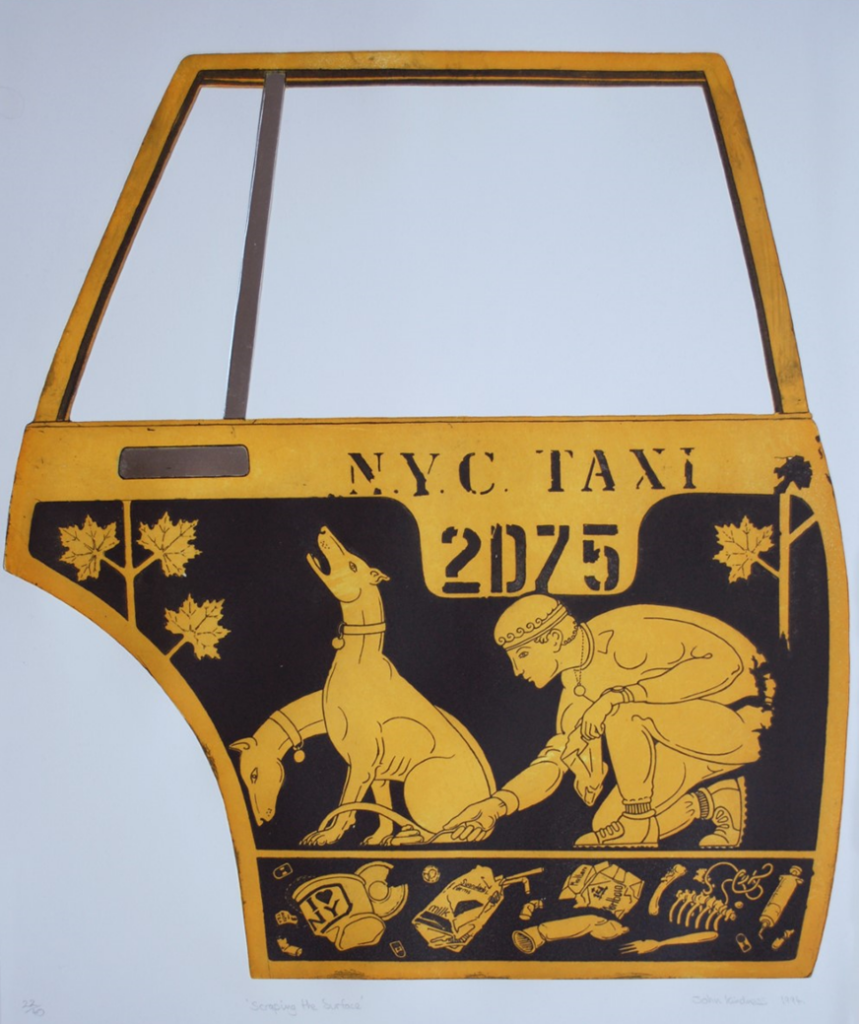
Q.1 Describe what you see in this image
A. The image is shown on a New York taxi door inscribed with the letters N.Y.C. and 2D 75 underneath. It is divided into two parts. The larger upper part shows a young man in profile kneeling on his right knee while scooping up excrement from the pavement, presumably left by one of the two hounds (also in profile), sitting in front of him. He is wearing running shoes and informal pants and top. He is wearing a medal around his neck and a watch on his left wrist. He has a headband lying over tightly curled hair. He is holding a bag open in his left hand to receive the excrement. The scene is framed by stylized plants with pointed leaves on the left and right.
Q.2 What do you notice about the man?
A. He looks like a twentieth century person in terms of his dress and actions but his hairstyle looks like that of an ancient Greek that one sees on Greek statues or on painted classical Greek pots.
Q. 3. What to you see in the lower part of the image?
A. Litter. The detritus of eating, drinking, drug use and sexual encounters: throwaway ‘I love NY’ cups, condoms, bones, injection needle etc.
Q. 4 Might there be a connection between the two parts of the image?
A. One interpretation could be that the upper part shows the act of a modern good citizen (with Greek styled hair), cleaning up after his dog, yet beneath the surface lies the disturbing detritus of today’s society. This seems to be an ironic comment by the artist on the contradictions of Western civilization, which began with the ideals of Greek democracy two thousand years ago. While on a residency in P.S. 1, New York, in 1989/90 the artist found a discarded taxi-cab door in the street. Then studying the Greek Antiquities at the Metropolitan Museum gave him the idea of etching the door with a contemporary scene much like Greek artists used the shapes of various vessels to fit their compositions into a central image with border designs.
.

